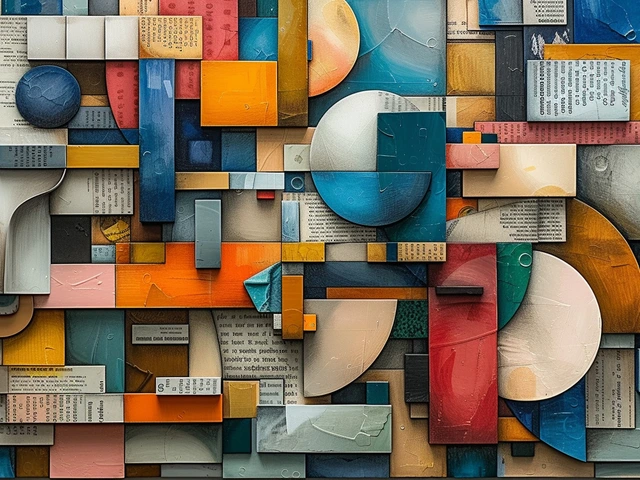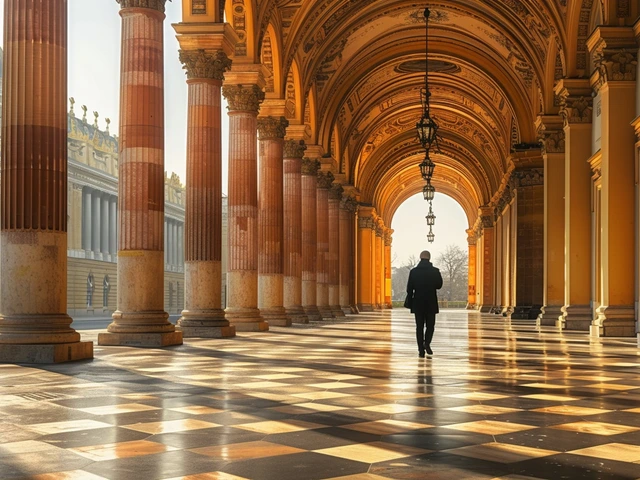Bauhaus Blueprint: The Birth of Revolutionary Design
I bet that when you hear "Bauhaus", it brings to mind clean lines, geometric shapes, and a certain functional elegance. Or maybe, like me, your mind jumps straight to IKEA - that's Bauhaus effect for you! But behind these clean, minimalist designs, there is an undercurrent of a revolution that transformed ordinary objects into functional and appealing masterpieces, and it all begins with the Bauhaus School.
Funny to think, right? A school, of all things, changing the face of modern design. The Bauhaus School was founded in Weimar, Germany, in 1919 by an architect named Walter Gropius. Its guiding principle? That art and design should, above all else, serve a functional purpose. It's called the Gesamtkunstwerk - what a mouthful! - which roughly translates to the 'total work of art'.
Bringing Form and Function Together: The Bauhaus Manifesto
You see, at the time, there was a gap between fine arts (sculpture, painting) and traditional, practical crafts (weaving, carpentry). Gropius, the forward-thinking chap he was, decided to merge the two. He wanted to create a new type of artist-craftsman, who could conceive and construct everyday objects and buildings that were functional, simple, affordable, and beautiful. And so, he penned the Bauhaus Manifesto, defining the principles of this new movement.
Living here in Perth, far from Germany, it might seem that all this is rather remote. But here's the thing: Bauhaus principles have found their way into nearly every corner of the globe, even down here in the Great Down Under. From iconic structures like the Sydney Opera House to the very IKEA chair I'm sitting in while writing this article. It's fascinating, isn't it? How design principles developed almost a century ago continue to shape our immediate environment.
Passing the Baton: Influencer-Innovators of Bauhaus
Now, if you're anything like me, you're probably wondering who were the designers, architects, artists that pushed this movement forward. Well, let's take a journey through Bauhaus history together!
First up, we've got Marcel Breuer, a Hungarian architect and designer. He pioneered the use of tubular steel in furniture design. His iconic Wassily Chair, named after his friend and fellow artist, Wassily Kandinsky, turned the concept of armchair design on its head. Its stripped-back design, with non-upholstered steel tubes and leather, was incredibly forward-thinking. Simple, sturdy, and, dare I say, remarkably comfortable!
Less is More: The Essence of Bauhaus Design
Alright, that's enough history. Let's delve into the nitty-gritty: what are the defining hallmarks of Bauhaus design? The mantra 'Less is more', coined by architect Ludwig Mies van der Rohe (another Bauhaus legend), encapsulates the philosophy.
It's all about minimalism, folks! Bauhaus designs are stripped down to their basic forms, with a focus on functionality rather than decorations or embellishments. Think about it: when was the last time you ever found an intricate carving or gilded ornamentation on something decidedly Bauhaus?
Bauhaus in the Contemporary World: A Lasting Legacy
Fast forward to today, and it's clear Bauhaus has had an enduring impact. This can be seen in architecture, furniture, graphic and product design - virtually everywhere. The principles laid out by the founding fathers of Bauhaus have become the foundation stones of modernist architecture and design.
Take Apple, for instance. Now there's a company that has truly embraced the spirit of 'less is more'. From their ever-sleek and minimalist gadgets to their clean and uncluttered software interface, the influence of Bauhaus is palpable.
Bauhaus and Me: A Personal Artistic Awakening
Ah, just like when I discovered my love for Vegemite and Tim Tams, my introduction to Bauhaus was a revelation. It was during a university art class, when our professor brought in a collection of household items designed in the Bauhaus style. Toasters, lamps, chairs - I couldn't believe how beautiful they looked in their minimalistic splendour.
Sadly, I can't claim that I'm any kind of artist. My skill with a paintbrush is limited to redecorating the bathroom. But the principle of 'less is more' resonated with me when I realised that simplicity goes way beyond visual aesthetics.
Making Peace with Bauhaus: Bringing Simplicity to Your Everyday
My friends, the beauty of Bauhaus lies in its absolute simplicity, which, ironically, is complex to achieve. But you don't have to be a design buff or an architect to appreciate the Bauhaus impact. Lighting a room with a Bauhaus-styled lamp or lounging on a Breuer-inspired chair, you'll be channelling a bit of Bauhaus into your daily life.
So, let's celebrate the genius of Bauhaus—sublime in its simplicity, practical in its elegance—for helping us appreciate that our surroundings need not be cluttered to be captivating. Now, if only they'd design a doghouse in Bauhaus style for my lazy old Labrador, and we'd be all set!



